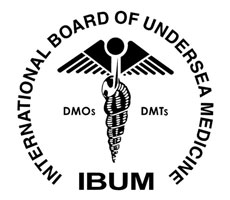Common Approaches to Non-Surgical Weight Loss

Non-surgical weight loss can help overweight or obese individuals who cannot or choose not to have weight loss surgery. Studies show that excess weight is a chronic problem. This condition makes you vulnerable to other lifelong ailments, such as diabetes. Losing weight can be a struggle, but there is still hope with this type of weight loss treatment. Here are the common non-surgical weight loss approaches to consider.
ESG or endoscopic sleeve gastroplasty
In this non-surgical weight loss treatment, the doctor will use an endoscope with a built-in suturing device. The goal is to tighten the stomach and make a sleeve inside. The patient will be under general anesthesia. Patients with a BMI of at least 30, who failed to lose weight through exercise and diet, qualify for this non-surgical weight loss treatment. Studies show that this procedure can lower a person’s risk for heart problems or Type II diabetes. The patient can go back to daily activities after one to two days.
The doctor will use about seven to 12 sutures to reduce the size of the stomach. The resulting appearance is a pouch in the shape of a banana. A smaller stomach will allow the patient to have smaller portions. It will also make the feeling of fullness last longer.
This non-surgical weight loss procedure often lasts for about 30-45 minutes. A hospital stay will not be necessary. The results will be like that of surgical sleeve gastrectomy. It can reduce the size of the stomach to 70%.
Gas-filled balloon system
A gas-filled balloon is swallowable. It will occupy the stomach, cutting down the person’s food intake. This non-surgical weight loss treatment can then help reduce the individual’s weight. The patient can look forward to lasting results.
Studies reveal that 89% of gas-filled balloon patients keep the primary weight loss results for more than six months after removing the balloon. This non-surgical weight loss treatment takes 10-15 minutes to complete. Clinical results reveal that the patient can lose more weight from this procedure than from exercising and dieting. The results are reversible, so the patient must push through with maintaining a healthy weight.
Fluid-filled gastric balloon
This non-surgical weight loss solution is for patients who have a BMI of 30-40. It will take about 20-30 minutes to perform. The patient will be under mild sedation first. Then the doctor will insert the deflated balloon into the stomach. Filling the balloon with saline will follow. The grapefruit-sized balloon will allow the patient to eat a limited amount of food. The recovery period is three days.
The doctor will remove the balloon after six months. There should be proper exercise and dietary choices after this non-surgical weight loss treatment. These practices will prevent the individual from gaining weight again. Research shows that some patients can lose 33-92 pounds in six months.
Long-term weight maintenance
The mentioned non-surgical weight loss treatments can remove excess weight. After a specific period, the individual must exert effort to make lifestyle and diet changes. Dedication is important in achieving one’s target weight. Below are some strategies that can help in one’s weight maintenance efforts:
- Add about 200 calories of nutritious, low-fat foods to the daily diet for a week. This will determine if the weight loss is still ongoing. If the weight loss persists, add more healthy calories. Doing so can help maintain the desired weight. Making a record of one’s food intake and exercise levels can help with how these adjustments are affecting the body.
- Exercise every day. At least 40 minutes of physical activity, at least three to four times each week, can help keep the extra pounds off.
- Join a workout group or exercise with people who have the same weight goals. A good support group can help motivate the individual to maintain an ideal weight.
- Stick to a new grocery list. It can be tempting to buy the treats that used to fill the pantry and cupboards. Make a healthy grocery list and stick to it. Do not go through the aisles where sweets and chips are.
- Use the stairs more often. Do this when going out on errands or even when visiting friends. Even the smallest efforts can burn calories and help maintain one’s ideal weight.
- Avoid stress eating. Instead of eating more, meditate, exercise, or do some gardening.
Non-surgical weight loss solutions can help you reach your target weight without having incisions and stitches
It is always possible to lose weight with diet and exercise. But if these practices do not work for you, maybe non-surgical weight loss solutions can. Your doctor can determine which one can help you achieve your target weight. After these procedures, your doctor can guide your weight maintenance by providing exercises and diet changes.
Get more information about Optimal Medical Group in Fresno at https://omgwellnessmd.com.
Check out what others are saying about our services on Yelp: Non-Surgical Weight Loss in Fresno, CA.
Related Posts
How to fix low libido in women begins with identifying the true cause of decreased sexual desire rather than treating symptoms alone. Low libido is most often linked to a combination of hormonal changes, medical conditions, mental health factors, and relationship dynamics. When these contributors are properly evaluated, sexual desire can usually be improved with…
Doctors for erectile dysfunction in Fresno, CA help identify the underlying cause of erection problems and guide patients to safe, effective treatment options. Erectile dysfunction often signals issues with blood flow, hormones, or psychological conditions, so choosing the right physician matters as much as the medications themselves. The core erectile dysfunction solution is to start…
The main causes of low sex drive in women are hormonal changes, underlying health conditions, psychological stress, relationship issues, and certain medications. This low libido, often called hypoactive sexual desire disorder, shows up as less interest in sexual activity, fewer sexual fantasies, or sex feeling more like a chore than a desire. The core solution…
Can a swollen prostate cause erectile dysfunction? In most men, an enlarged or “swollen” prostate does not directly damage the erection mechanism, but it can still contribute to erectile dysfunction in powerful indirect ways. Urinary symptoms, sleep disruption, anxiety, and certain medications linked to benign prostatic hyperplasia (BPH) can all interfere with normal erectile function…
















